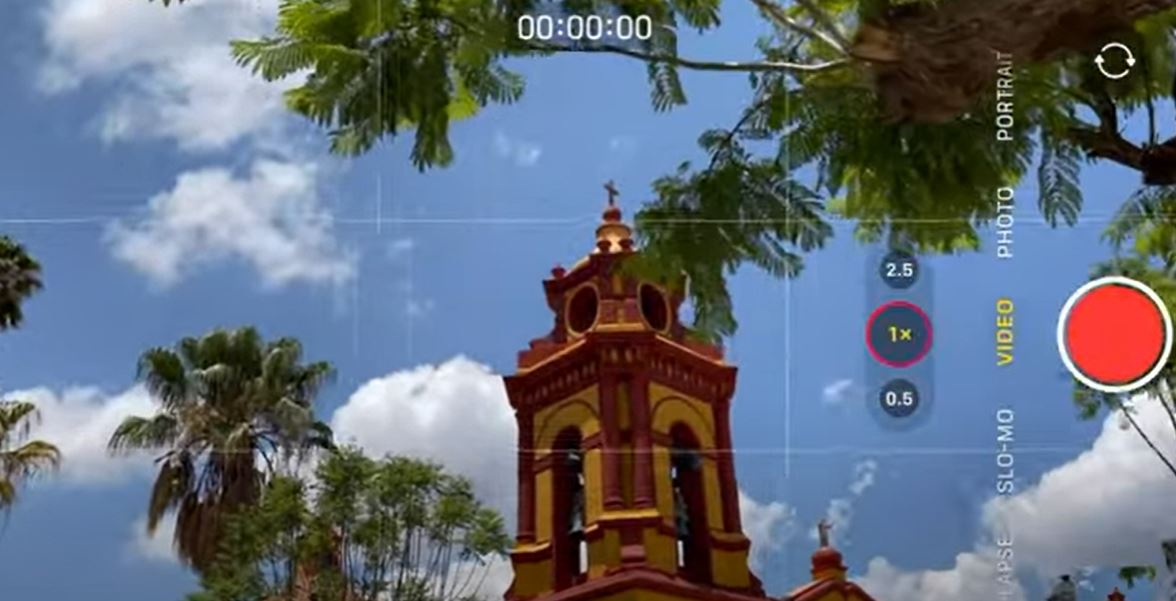In the age of smartphones, capturing professional-grade content on the go has never been easier. With an iPhone in your pocket, you can create breathtaking visuals that rival high-end cameras. In this guide, we’ll explore how to elevate your video and photography game, especially when shooting in vibrant settings like the plazas of Mexico or any picturesque location. From understanding composition to mastering advanced techniques such as slow motion and focus transitions, this article will walk you through everything you need to know to make your footage cinematic and dynamic.
By the end of this article, you’ll be equipped with the skills to shoot like a pro and produce visuals that truly stand out.
1. Understanding the Power of Your iPhone Camera
iPhone Camera Features
Apple’s iPhone is renowned for its powerful camera system, offering multiple lenses, ultra-wide angles, and stabilization technology. These features enable you to create smooth, stable, and cinematic shots without requiring professional equipment. Let’s break down the key aspects of the iPhone camera that you should utilize to enhance your footage:

- Multiple Lenses: Use the ultra-wide (0.5x), wide (1x), and telephoto lenses (2x or more) for different compositions.
- Stabilization: iPhone’s built-in optical and digital stabilization ensures your shots remain steady even when walking or panning.
- Slow Motion: Slow-mo mode allows you to capture dynamic movements and smooth transitions that can add cinematic flair to your videos.
- Focus Control: iPhones now offer impressive autofocus and manual focus lock features, letting you craft more professional-looking shots.
Choosing the Right Camera Mode
The iPhone camera app offers several modes to capture both photos and videos:
- Photo Mode: Ideal for still images with good lighting and steady hands.
- Video Mode: For capturing live motion and high-quality video content.
- Slow Motion: Slows down footage to highlight specific moments in the scene.
- Time-Lapse: A unique way to show the passage of time in fast-forward motion.

For cinematic video, it’s crucial to switch between these modes based on your desired effect, whether you’re capturing sweeping landscapes or intimate close-ups.
2. Composition Techniques: Framing Your Shot
When filming in vibrant locations like Mexico’s plazas, framing is essential. Here are the key tips to ensure your shots are both engaging and visually appealing:
Focus on the Focal Point
In any scene, your subject should be the main focal point. Whether it’s a stunning church at the center of a plaza or a local performer, your composition should direct the viewer’s attention to this subject. To do this, you can utilize the rule of thirds or leading lines to guide the viewer’s eye naturally.
Layer Your Shots
Layering involves using elements in the foreground, middle ground, and background to create a sense of depth and dimension. For example, placing a flower or tree branch in the foreground adds texture and interest, while a distant building can serve as the background to give your shot more depth.
Use the Right Angle
Experiment with different angles to avoid stagnant, flat shots. For instance, try filming from a lower angle to create drama, or experiment with high angles to capture expansive scenes. Changing perspectives will add variety and dynamic energy to your shots.

3. Incorporating Motion: Creating Dynamic Visuals
Adding motion to your shots brings energy and excitement to your video content. There are several ways to achieve smooth, cinematic motion using your iPhone.
Walking Shots
One of the simplest ways to introduce motion is by walking while recording. The iPhone’s stabilization technology compensates for shakes, creating smoother footage even as you move through the scene. Try walking slowly while keeping the camera at a steady height to maintain consistent framing.
Slow Motion
Slow-motion footage can enhance movement, making it feel more deliberate and cinematic. For example, shooting the wind moving through trees or a dancer’s graceful movements in slow-mo emphasizes the motion and makes it feel more dramatic.

Time-Lapse for Transitioning
A time-lapse video can be a great tool for showing the passage of time. It’s perfect for capturing crowds gathering in a plaza or the shifting sunlight throughout the day. By speeding up scenes, you create a dynamic transition between static shots.
Using Focus Pulls
A focus pull is when you shift the focus of the camera from one object to another. It’s a great way to highlight something important in a scene, such as a person walking in front of a busy background. You can control the focus by tapping on different points in the frame, shifting the audience’s attention naturally.
4. Advanced Techniques: Elevating Your Shots
As you become more comfortable with your iPhone camera, you can experiment with advanced techniques like transition effects, focus transitions, and creative camera movements.
Transition Effects
Transitions help you seamlessly move from one shot to another. A simple but effective method is the wipe transition, where you use objects in the scene (such as a tree or a passing car) to block the view and reveal a new shot as the object “wipes” across the screen. This creates a smooth visual flow between scenes.
You can also use the Palm transition, where you move the camera towards your palm, obscuring the lens before cutting to a new scene. It’s a creative and engaging way to shift between different locations or moments in time.
Focus Transitions in Slow Motion
In addition to manual focus, combining slow motion with focus pulling adds a cinematic touch. Start by tapping on the background to set focus, and then gently shift the focus to a foreground element, like a flower or a tree branch. This creates a visually interesting and smooth transition in your shots.

Working with Light
Good lighting is the foundation of any great video or photo. Consider shooting when the sun is low in the sky, such as during golden hour (just after sunrise or before sunset). Backlighting, where the sun is behind your subject, creates dramatic silhouettes and makes your scene more visually compelling.
5. Editing Your Footage: Bringing It All Together
Once you’ve captured your footage, it’s time to edit and stitch it together for a polished final product. Here are a few editing tips:
Cutting for Dynamic Flow
When piecing your clips together, cut between shots frequently to maintain energy. A 3 to 5-second cut is ideal for keeping the viewer’s attention. If you have more cinematic shots, slow the pace down for effect.
Using Transitions Creatively
As mentioned, creative transitions like wipes or fades can keep your video feeling fresh and interesting. Use them sparingly to add flair without making the video feel too gimmicky.
Color Grading and Filters
Using color grading tools or applying subtle filters enhances the visual tone of your video. You can adjust the saturation, contrast, and brightness to make the colors pop, especially when filming in vibrant locations like Mexican plazas.
6. Practical Tips for Filming in Vibrant Locations
When filming in locations like Mexican villages, take advantage of the surroundings. Plazas are often filled with colorful flowers, vibrant street art, and architectural landmarks that can add richness to your shots. Here are some final tips to capture the essence of these locations:

- Capture the details: Focus on small elements that tell the story of the place—like a hand-painted sign, street vendors, or the texture of the stone pavement.
- Play with reflections: Water, windows, and shiny surfaces create interesting reflections. Use these to add dimension and intrigue to your shots.
- Look for contrast: Whether it’s the bright colors of flowers against dark stone buildings or the shadow of a tree stretching across the ground, contrasts help make your footage pop.
Conclusion
Mastering the art of cinematic video and photography with your iPhone requires practice, but with the right techniques, you can elevate your content and capture stunning visuals wherever you go. By understanding the camera features, experimenting with composition and motion, and employing advanced editing techniques, you’ll be well on your way to creating breathtaking videos.
So, whether you’re strolling through the vibrant plazas of Mexico or capturing the simple beauty of nature, the iPhone’s camera can be your ultimate storytelling tool. Ready to get started? Grab your iPhone and start filming your next masterpiece.
